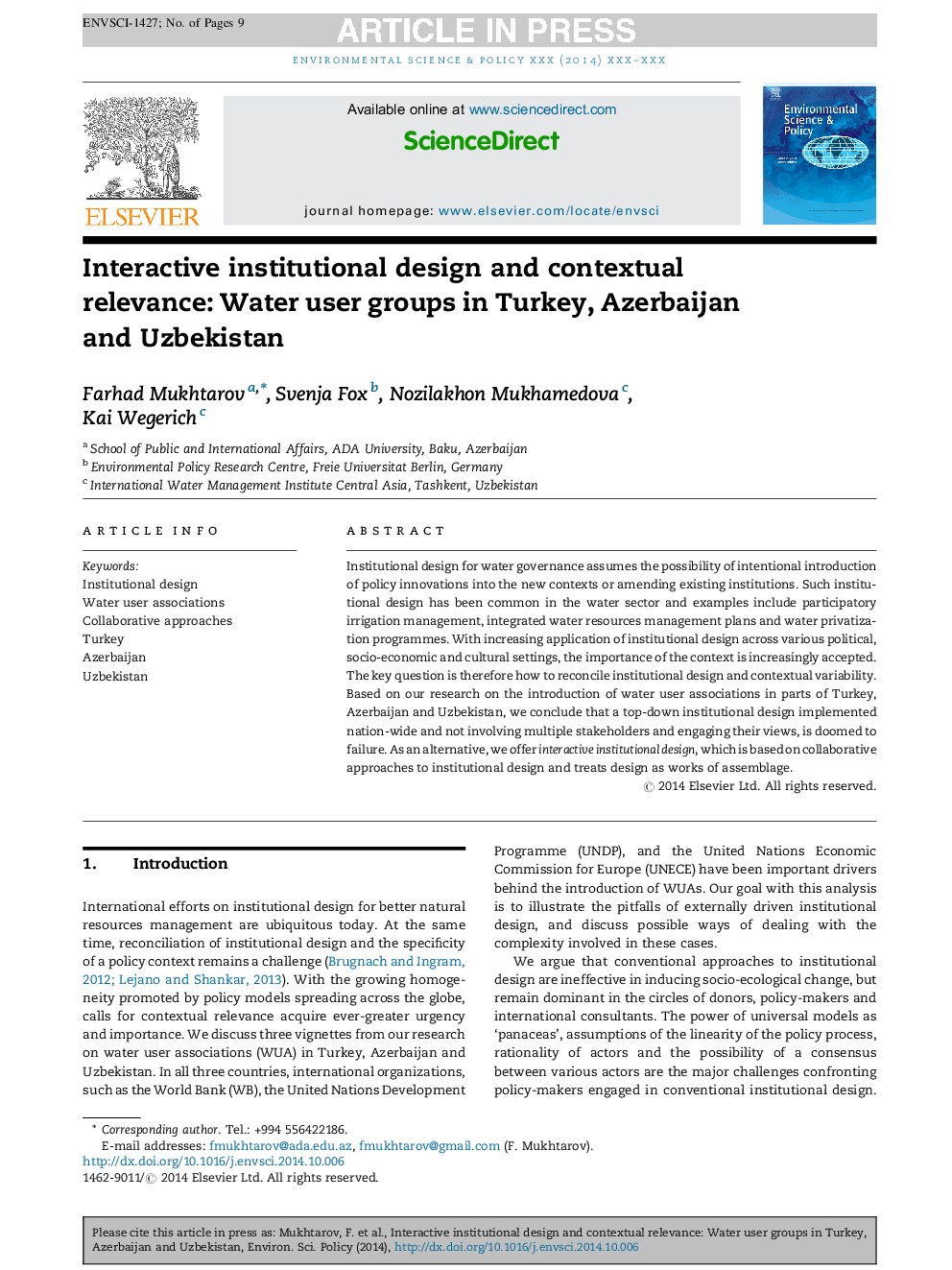| Article ID | Journal | Published Year | Pages | File Type |
|---|---|---|---|---|
| 10504586 | Environmental Science & Policy | 2015 | 9 Pages |
Abstract
Institutional design for water governance assumes the possibility of intentional introduction of policy innovations into the new contexts or amending existing institutions. Such institutional design has been common in the water sector and examples include participatory irrigation management, integrated water resources management plans and water privatization programmes. With increasing application of institutional design across various political, socio-economic and cultural settings, the importance of the context is increasingly accepted. The key question is therefore how to reconcile institutional design and contextual variability. Based on our research on the introduction of water user associations in parts of Turkey, Azerbaijan and Uzbekistan, we conclude that a top-down institutional design implemented nation-wide and not involving multiple stakeholders and engaging their views, is doomed to failure. As an alternative, we offer interactive institutional design, which is based on collaborative approaches to institutional design and treats design as works of assemblage.
Related Topics
Physical Sciences and Engineering
Energy
Renewable Energy, Sustainability and the Environment
Authors
Farhad Mukhtarov, Svenja Fox, Nozilakhon Mukhamedova, Kai Wegerich,
